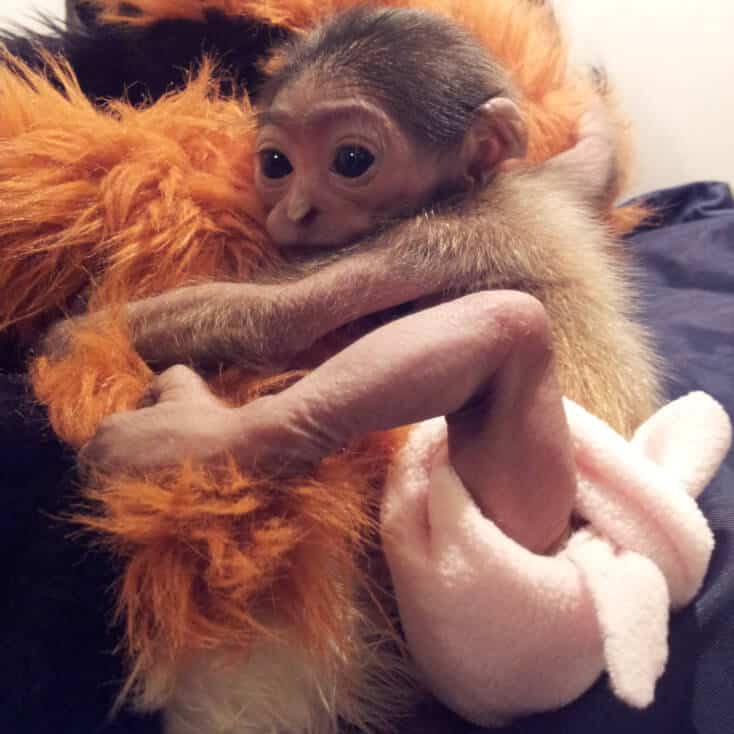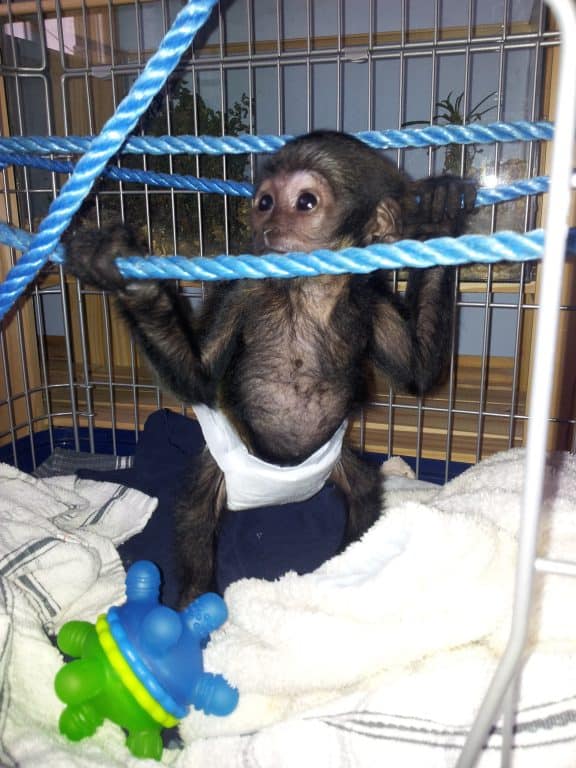So this week I’ll be talking about my favourite group of primates, Gibbons. Not only are they a striking animal to look at but they are also unique amongst other primate groups in their genealogy, social structure and behaviour. All these aspects added together make them my favourite primates to have the privilege of working with.
We have many visitors come to the park and fall in love with our gibbons (and I don’t blame them!) without knowing how different they are compared to our other primates. Here at Wingham Wildlife Park we have White cheeked gibbons (listed as Critically Endangered by the IUCN) and a hybrid of Agile and Mueller gibbons that does occur naturally in the wild due to overlapping territories.
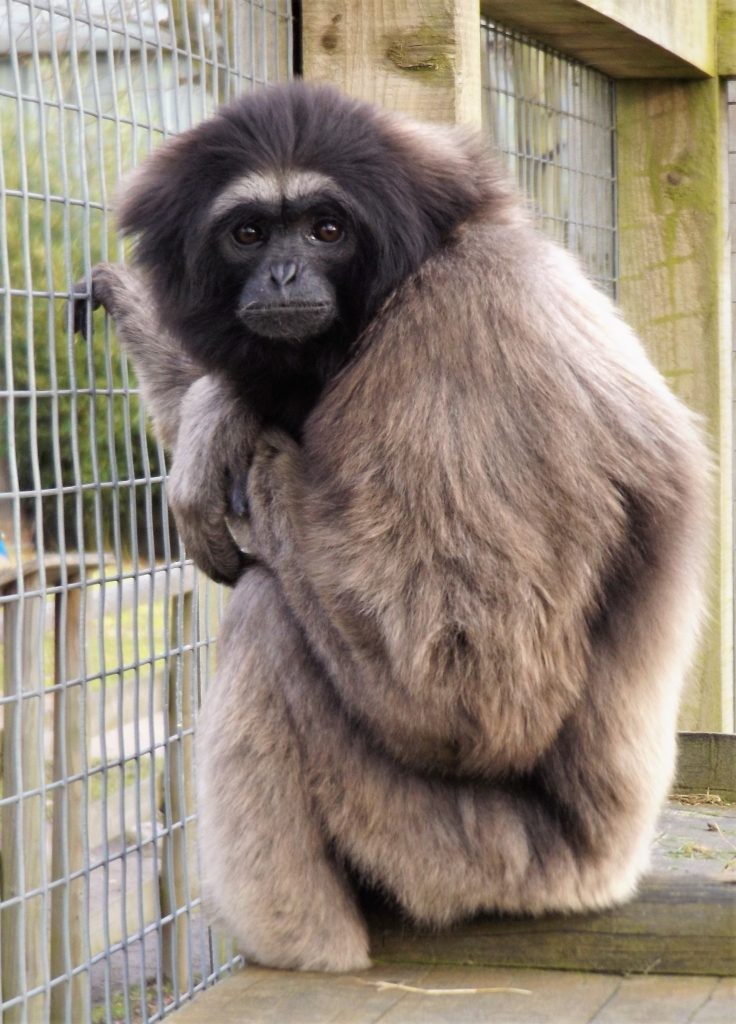
So what is a Gibbon and what makes them so different to all the other primates?
First off many people think they are monkeys, but they are actually members of the Lesser Ape family. Similar to the great apes (Chimps, Orang Utans, Gorillas and humans) they have a human like build and no tail however, they have longer arms, dense hair and throat sacs for singing and calling! Yes Gibbons can sing!!
There are 20 species of Gibbon and they are found in tropical rainforests of southeast Asia. They are an arboreal primate which means they spend the majority of their time high up in the tree canopies and they move from branch to branch with high speed and agility. They do also venture to the ground and can walk on two feet like other apes, however they do have to hold their arms upright above their heads or behind them which makes it quite comical to look at!
Their diet consists mainly of fruit and leaves from the trees they dwell in but have been known to feast on insects and bird eggs for a bit of variety!
The 20 species are divided into 4 different groups which are Hoolock, Hylobates Nomascus and Symphalangus and although they are all genetically related, scientists have described these groups as being as different as humans are to apes. Most Gibbon species are roughly half a metre in height and can weigh 5-6kg for the smaller species and anywhere up to 12kg for the largest of the gibbon species, the Siamang.
There are some striking differences between gibbon sexes as well, for example the white cheeked gibbon male is all black in colour with white cheeks (clue is in the name!)
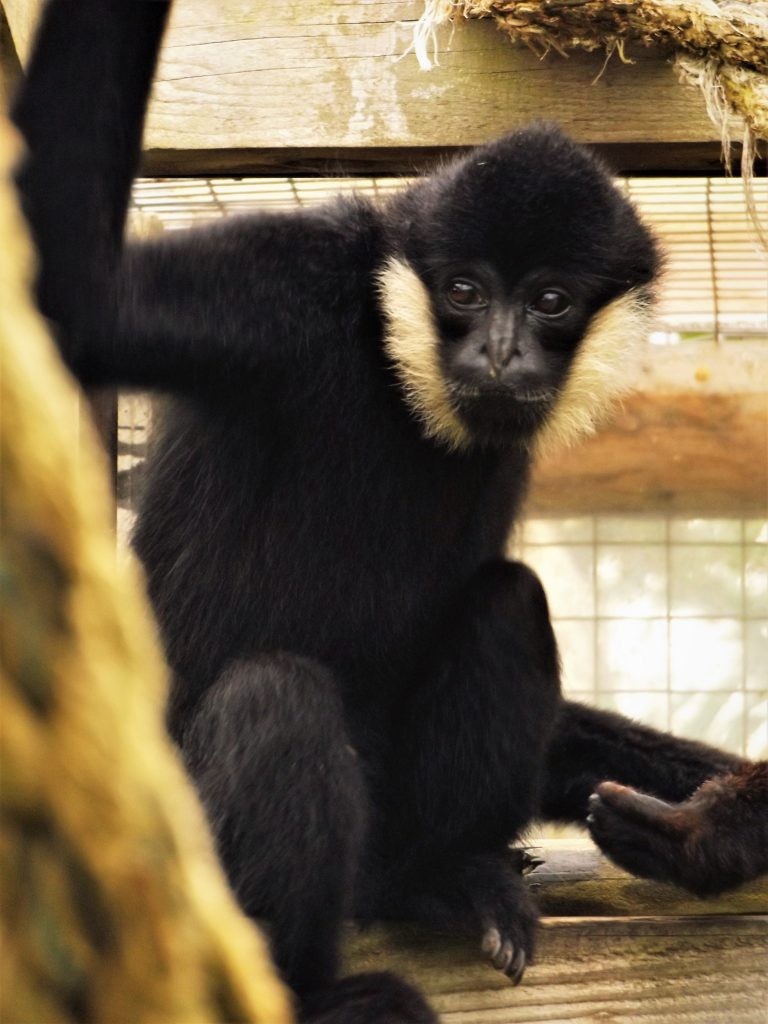
Whilst female and newborn white cheeked gibbons are blonde all over. All young will develop a black coat (usually between 6-12 months of age) and while males will remain this colour, the females will return to their blonde colouring when they reach sexual maturity at about 5-7 years old with the addition of a black patch on their head.
As mentioned earlier gibbons are very musical in their calls, they use their throat sac to amplify their loud calls which can carry over long distances and has been described as a song- one of the best parts of coming to work is hearing their loud calls in the morning. They do these calls for different reasons, males can sing early in the morning to claim his territory or to let females know that there is a male nearby and to warn off other males. Usually the males with the loudest and longest calls will ward off any unwanted males in his territory and attract females, almost like a sing off or battle of the bands!! Females will also sing back to a male who is searching for a female to let them know their location if she is in season.
Another unique behaviour that is found in gibbons is that when males and females mate they are usually monogamous and stay together to breed and rear their offspring, which is rarely found, especially in the primate world, and when they are together they will sing duets and announce to the forest they are together and this is their spot!
Gibbon Conservation
Unfortunately for most primate species around the world, gibbon numbers are in decline and one of the major contributing factors is habitat loss, fragmentation and forest degradation- palm oil plantations are mainly driving gibbon populations further and further inland without much space to expand and even isolating some populations so they cannot travel the distances they need to keep the gene pool healthy and diverse.
Other reasons include hunting and poaching and use in traditional medicinal practices. Populations throughout Indonesia are slowly dropping and what makes matters worse is that they are a thoroughly hard animal to study in the wild. They are high up and move at tremendous speeds which makes it extremely difficult to get an accurate understanding of their population sizes and whether it is declining or increasing.
However, even though they are hard to study scientists very recently discovered a new species of Gibbon in early 2017. It was originally classified as the eastern Hoolock gibbon, however they noticed these particular animals were behaving and looking slightly different to their counterparts. So after meticulous studying they classified it as an entirely new species, and being a massive Star Wars fan myself I couldn’t be happier with the new name selection: Skywalker Hoolock Gibbon.
Even though it is extremely hard to get a grasp on the entire population situation there are so many organisations and charities across the globe that strive to raise awareness about the dangers of palm oil plantations and its effects on animal populations. People around the world can easily make small changes to their daily routines to reduce the need for palm oil and therefore slow the destructive rate of gibbons home ranges. Conservation efforts from charities, zoos and sanctuaries which are helping to educate local communities and people worldwide, will hopefully continue to shine a light on these beautiful animals and the troubles they face in the wild.
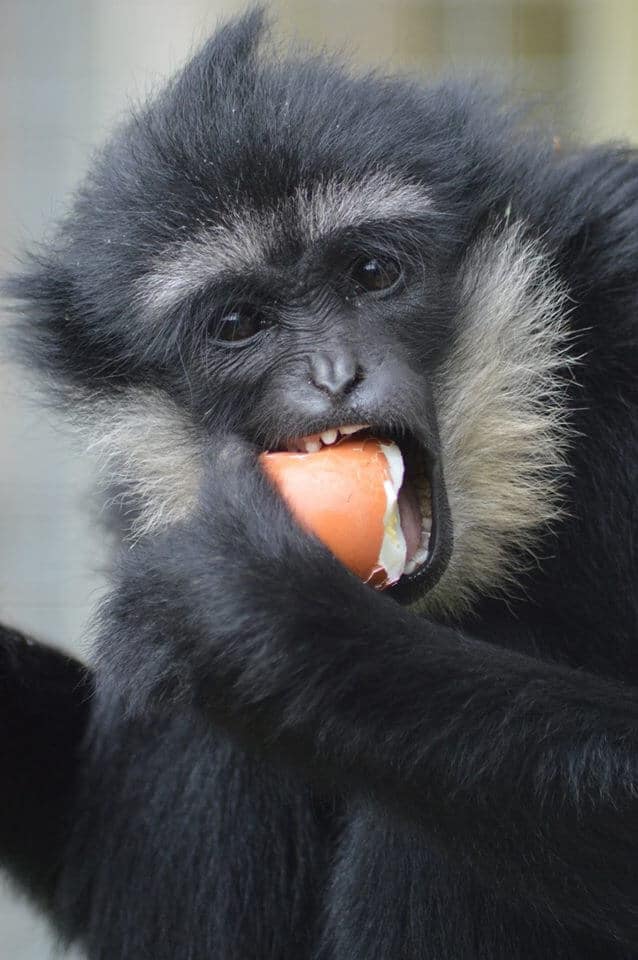
Come and visit our gibbons, Laos, Pickle, Vera and Ollie soon or you can take your love of gibbons to the next level by adopting Pickle for a year here!
